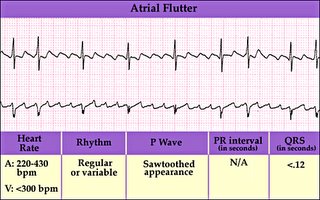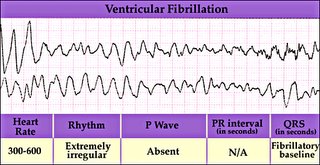Recently I received an email from a MRCP Part 1 and 2 blog reader about ABG interpretation in MRCP. I share with him the same feeling that ABG interpretation is important in MRCP as well as your daily clinical practice.
Our blood PH is closely regulated in a tight range around 7.4±0.05 so that our body can function properly. As you might remember during your secondary school time, enzymes function in certain PH range and will be damaged by acidic or alkaline environments.
Although a lot of candidates ( and a lot of house officers) tend to make various mistakes in ABG interpretation. I would like to give a few simple rules to remember so that you will not make any more mistakes in future,
1) There are two important organs in our body which control our body PH- lung and kidney.
2) Carbon dioxide is an acidic gas, therefore, in acidic environment ( due to various insults), our body ( the lung) tends to compensate by exhaling out more CO2 ( therefore, patient tends to hyperventilate) and vice versa.
3) HCO3 is alkaline and its level is mainly regulated in our kidney.
4) PH=7.4 is normal, if PH less than 7.35 is acidic and more than 7.45 is alkaline.
5) Remember other normal values, normal HCO3=22-28 mmol, PaO2 more than 10.6 kpa ( 1kPa=7.6mmHg), PaCO2=4.7-6.0 kPa ( 35-45mmHg)
OK, for you to interpret ABG results correctly, follow these simple steps,
1) Read the PH first, if PH<7.35, it is acidosis, if it is more than 7.45, it is alkalosis.
2) Once you know whether it is acidosis or alkalosis, you must determine eithet it is respiratory or metabolic, I find two useful parameters to look at, HCO3 and PaCO2.
Let me show you a few examples,
1) Metabolic Acidosis
I still think this is the commonest and most important acid-base balance disorder you will find in your MRCP and daily clinical practice. Read the causes for metabolic acidosis in my previous post.
However, in daily practice, you commonly find metabolic acidosis in uraemia ( chronic kidney disease patient) , diabetic ketoacidosis, salicylates poisoning and lactic acidosis.
Therefore, in metabolic acidosis, you will find PH↓, HCO3↓ and PaCO2↓, it is easy to understand, in metabolic acidosis, our body cannot conserve HCO3, therefore the level of HCO3 is low, however, for our body to compensate ( try to push up PH level), we will hyperventilate to blow out more CO2 ( because CO2 is acidic), therefore, patient will hyperventilate in metabolic acidosis. (air hunger)
You must remember that there are two types of metabolic acidosis- reduced anion gap and normal anion gap ( normal anion gap=8-16 mmol) metabolic acidosis, I have covered this topic in my previous post.
MRCP Question
A 16-year old girl is admitted to your ward from A+E department due to vomiting and abdominal pain. She has no known medical problems and denies taking any illegal drugs.
On examination, you noticed she is dehydrated, blood pressure=90/50, pulse rate=120 and her abdomen is soft. Below are her blood results,
Full blood count
Total white 16,000 ( Normal 4000-11,000)
Hb=12.3
Plt= 235,000
K= 3.2
Creatinine= 110
Na= 131
Cl=100
ABG ( on room air)
PH=7.21
HCO3= 12
PaO2= 12.2 kPa
PaCO2=2.5 kPa
Q: What is the diagnosis?
For the above ABG result, you know that the patient has metabolic acidosis and she presents with history of vomiting and abdominal pain, the first provisional diagnosis you should think of as a SHO is diabetic ketoacidosis!
2) Respiratory Acidosis
This is the second commonest acid-base balance problem you will see in your daily practice. Patients develop this because he/she is unable to blow out CO2 in the lung leading to accumulation of CO2 and respiratory acidosis. Therefore, our body will try to compensate by keeping more HCO3 via the kidney to buffer the acidosis. However, you must remember that kidney works somehow slower than the lung, therefore in acute respiratory acidosis (acute CO2 retention), you may find the HCO3 level is normal but in chronic CO2 retention ( such as in CAPD/COAD or chronic lung disease patients), the HCO3 level tends to be high.
This remembers me when I was a medical student where my lecturer liked to ask me way to help clinicians to differentiate COAD/COPD from asthma by looking at ABG results.
If you are a SHO on call in chest ward, a patient comes in with acute breathlessness and you notice he/she has rhonci all over the lung, you will most probably find the following ABG if you put patient on oxygen supplement,
PH ↓, PaO2 ↑, PaCO2↑ ( Respiratory acidosis)
For COAD /COPD, since that patients may have chronic CO2 retention, you will notice the HCO3 level tends to be high but in asthmatic patients, since it is an acute asthmatic attack that leads patient to have acute CO2 retention, you may find the HCO3 level to be normal ( kidney needs sometime to conserve HCO3, therefore in acute CO2 retention, the HCO3 level may be normal)
However, I must warn you that this rule is only for your reference only, there is no 100% in clinical medicine but I find this rule rather useful in daily practice.
I will talk about metabolic and respiratory alkalosis in my next post!






